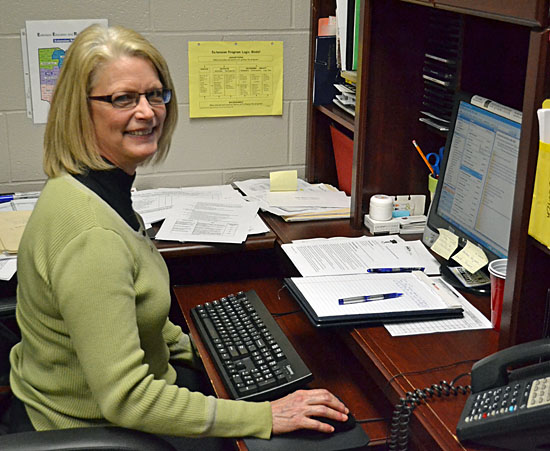Development not just about the ‘big one’
Editor’s note: This is the first in a three-part series about economic development that explores just exactly what makes up economic development and the issues that help – and hurt – development in Van Wert County, as well as what is planned for the future of local development. The first article in the series looks at three misconceptions about economic development.
DAVE MOSIER/independent editor
In her job as Van Wert County economic development director, Nancy Bowen is asked a lot of questions about the county and its economic development opportunities. There’s one question, though, that will always get her attention: “Why isn’t economic development happening in Van Wert?”

“My contention is that it is happening,” Bowen said, noting that the local community has a number of misconceptions about economic development.
The three main misconceptions are that:
- Economic development is about “landing the big one.”
- Big ones come around frequently.
- Coming in second in a competition for a new plant is no better than coming in last.
It’s all about the ‘big one’
Instead of “the big one” dominating economic development in a rural area like Van Wert County, Bowen said helping local residents start or grow businesses actually creates, on average, 90 percent of jobs in rural areas.
She noted that Van Wert County has several good programs that help entrepreneurs and existing businesses that want to start up or grow. Among those are the Microenterprise and Revolving Loan funds created by Van Wert city and county to provide low-interest loans for small businesses. The loan programs, developed in the last decade, have grown to a combined portfolio of $2.5 million, with 53 loans and more than 300 jobs created.
Existing local businesses, such as LifeStar Rescue, Braun, Cooper Farms, Kennedy and others, are also assisted annually through the economic development office’s retain and expansion program.
Bowen said she spends about 40 percent of her time working with existing businesses on retention and expansion and another 30 percent on microenterprise services, leaving about 30 percent to deal with new development related to larger companies.
Big ones aren’t like city buses
When it comes to the “big one” – those projects that bring hundreds, if not thousands, of jobs to a community – Bowen said they don’t come along every day and stressed that a community has to be ready when they do.
Chasing after large employers is a learning experience, Bowen said, adding that local development officials are much more prepared now than they were a few years ago to deal with the scrutiny that comes from a “big one.”
“When Honda looked at us, we really weren’t prepared to deal with all the questions they asked us,” Bowen said, noting that companies typically have hundreds of questions about a community and a potential development site.
Local officials have learned from the process, she added, to the point that she feels the community is fully ready when the next big development opportunity comes along.
One important asset for the community when it comes to landing a “big one” is the 1,600-acre Jobs Ready Site being development north of Van Wert.
“Identifying, preparing, assembling over $8 million in grants and certifying the largest job ready site in the state (one of only two megasites) is our way of making sure we are prepared for the big one,” Bowen said.
Various community entities have been involved in the process that will bring a fully-certified industrial-commercial site online next year, with utilities, a railroad spur and other infrastructure improvements making the site “shovel ready.”
Second is no better than last
The fact that Van Wert has lost out to two Indiana communities on “big ones” is in many ways a positive, since it shows major employers are very interested in the local community. Bowen did admit, though, that it’s hard to be as close as Van Wert has been and not end up being selected.
“It is frustrating, there’s no doubt about that,” she noted, adding, “I can’t tell you how many hours we spent on the Family Dollar project alone.”
However, even being a bridesmaid, when it comes to economic development, has been helpful to Van Wert, most of all because it shows the community is attractive to those looking at building a new plant or commercial facility.
“With the nod from Honda and now Family Dollar (after thorough review), we can rest assured we have what it takes to land the big one,” she noted.
Even more important, the interest shown in the community by major employers like Honda and Family Dollar has led to increased exposure from site selection consultants – those people who let companies know about communities that are ripe for development.
“Exposure is one of the hidden benefits of site development and large company recruitment,” Bowen said.
“You get noticed by site selection consultants and competing companies and, eventually, if your community has what it takes, you’ll land that big one – but it may take several tries.”
Proof that the community is being noticed, she said, is the fact that more companies are looking at it than since the mid-1970s, when Varco-Pruden brought 100 jobs to the area.
While it would be nice to land a big one, Bowen noted that even coming in second is better than no interest at all. “Coming in second is frustrating, but it’s better than last, or not having the opportunity at all.”
Tomorrow: Is Van Wert dying?
POSTED: 02/24/11 at 4:19 am. FILED UNDER: News







